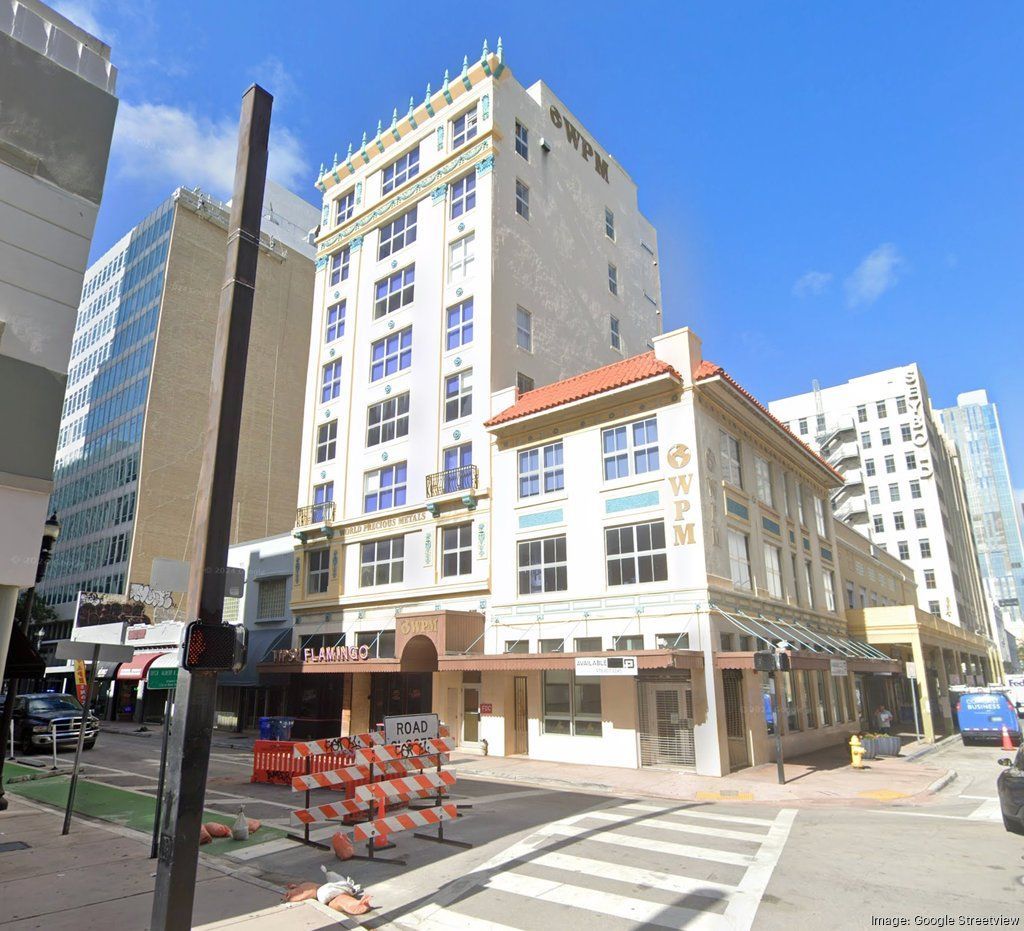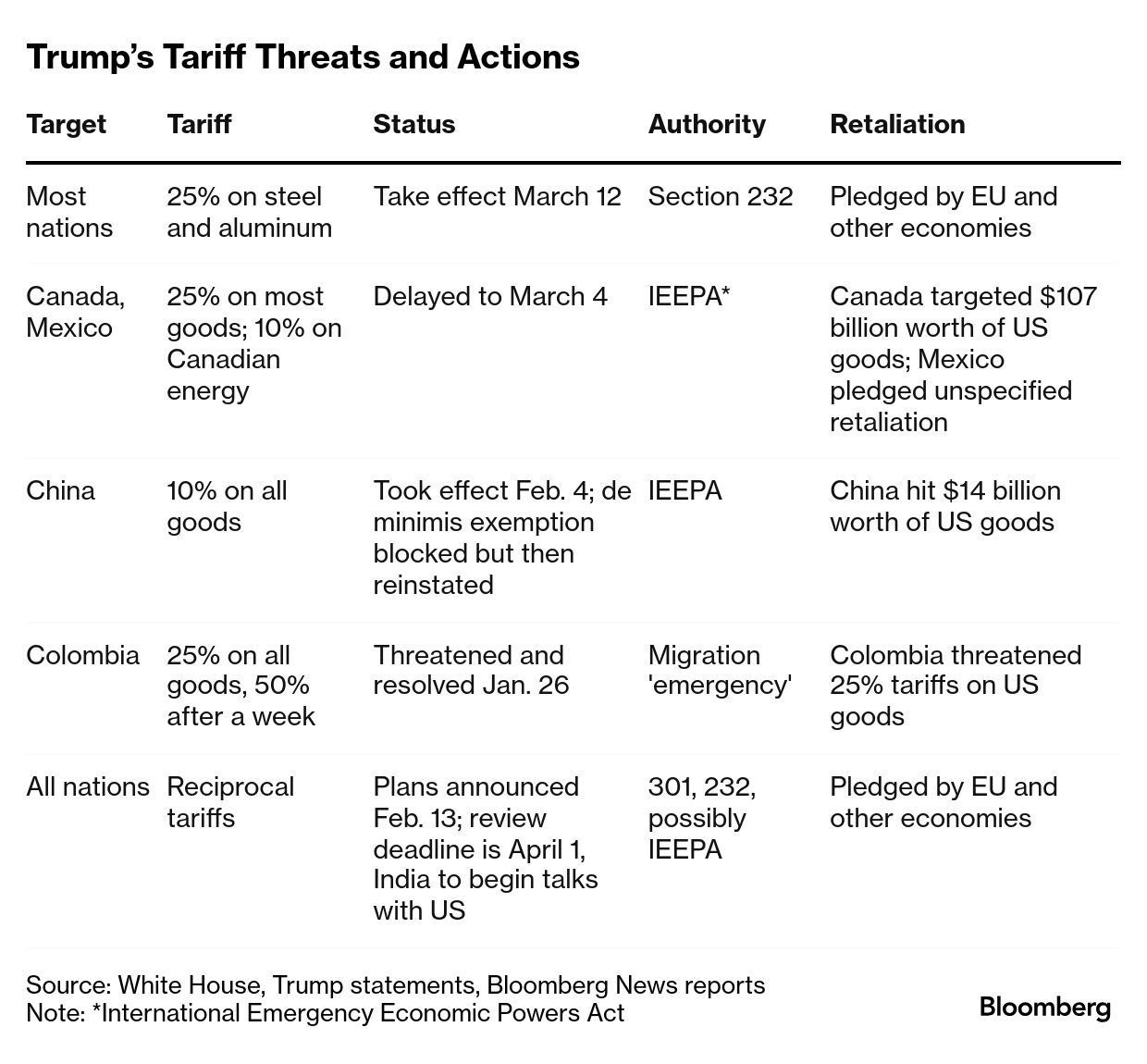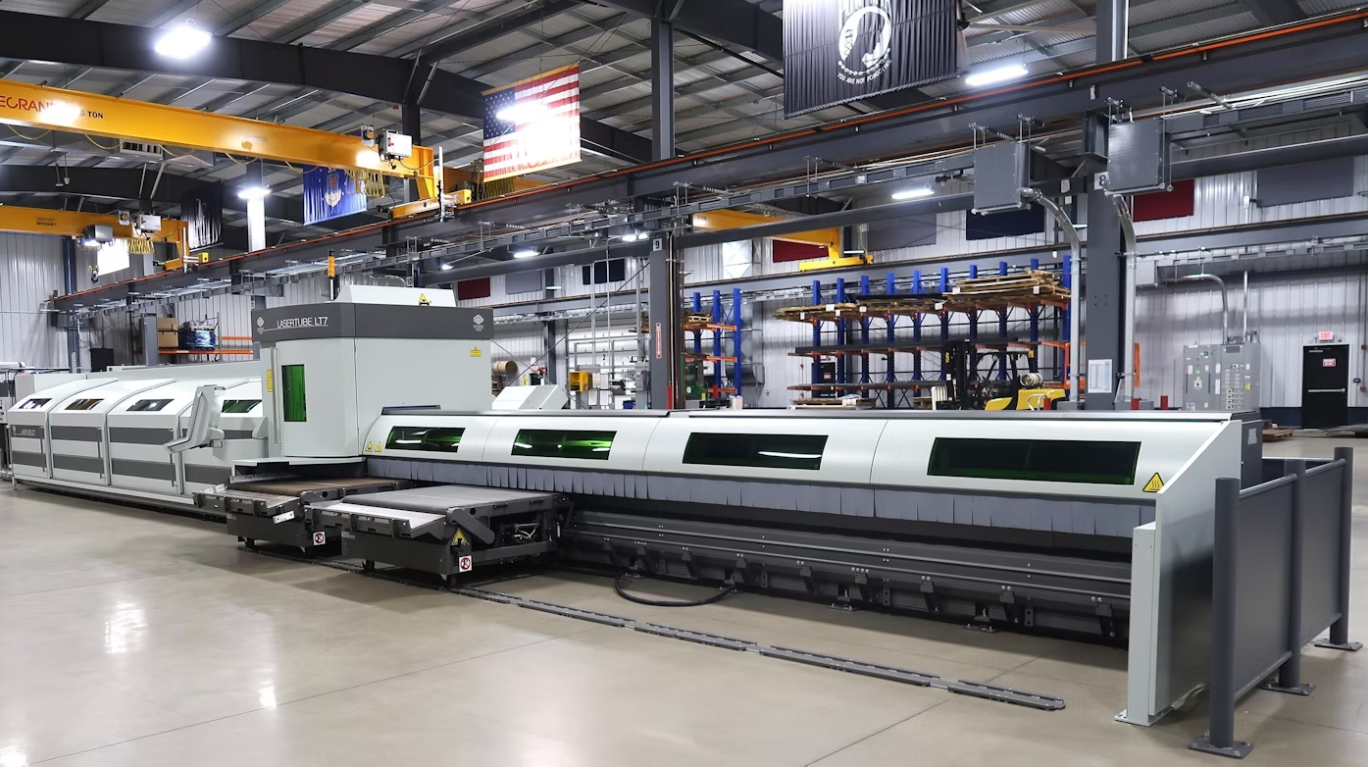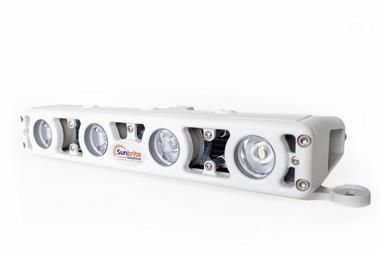Trying to Predict Trump’s Unpredictable Trade Policies
Industry stakeholders break down the
numerous variables.
Uncertainty can be a dangerous thing. Faced with not knowing what to expect or how to move forward can leave manufacturers dangling between strategies that are simultaneously too aggressive, yet not proactive enough.
This is the current situation when it comes to supply chain management heading into the New Year. President Donald Trump has generated equal parts excitement and worry with campaign pledges that focus on expanding and creating new tariffs. This has lead to reactions that stem from optimism for manufacturing expansion and job creation due to a more level playing field, to others worrying about how cost increases will impact day-to-day operations and pricing.
In continuing with the dichotomy that dominates this topic, I recently sought input from a collection of industry players to get feedback about the potential benefits and pitfalls of Trump’s strategies. I was extremely impressed with the answers, as the focus was not on politics, but the long-term impact on the health of U.S. manufacturing.
While I’ll leave the more granular takeaways to be determined by each reader, there is one over-riding principle that I wish to note. Very simply, and as is usually the case, the responses enterprises take to any action or inaction regarding tariffs will stem from the unique operational and sourcing environments in which they operate.
In other words, stay informed, talk to your customers and listen to your people. That information, coupled with these insights and future reports from this site, will help navigate whatever lies ahead.
Jeff Reinke, Editorial Director: Increasing tariffs, in theory, are supposed to motivate companies to move operations from China, Mexico, etc. to the United States. What do you think is more likely – companies creating more U.S.-based jobs, or will they find different overseas locations with lower tariffs than say, China?
Greg White, President of Manufacturing at Manufacturing Corporation of America: Tariffs are only part of the puzzle. Labor rates in China have risen substantially in recent years and now surpass Mexico and Vietnam, which have seen significant increases in outside investment due to this trend.
While tariffs are an economic policy intended to have a direct impact on our foreign relations, it will only be effective at creating growth and jobs in the U.S. if it is coupled with strong incentives to build our manufacturing infrastructure, R&D credits, and shoring up the gaps in our education system. It will also require significant tax breaks for factory workers to ensure manufacturing can compete with high-paying industries such as construction.
In the short term, tariffs will produce an almost immediate increase in the price of goods in the U.S., commensurate with the amount of the tariff. Once companies have enough data to determine if the price increases are stable and palatable, a decision can be made whether to continue with the price increase or consider alternative means for that revenue stream.
In the long term, tariffs will force foreign manufacturers to decide how to move forward. Once there is enough data to decide whether to continue producing in spite of the tariff or to seek less obstructive methods to sell their goods, manufacturers will determine their next course of action. If it is easier – and cheaper – to sell their goods from Argentina or Nigeria instead of the U.S., then they will do so. The imposition of tariffs – without additional changes – will not necessarily bring manufacturing jobs back to the U.S.
John DiDonato (Founder and CEO) and John Killburg (President) of K12 Print: We’ll likely see a mix of both. Some companies will explore alternative overseas locations, while others will view this as an opportunity to bring manufacturing back to the U.S. For reshoring to succeed, the U.S. needs to present it as a cost-effective, competitive option.
Kevin Rhode, partner at The Bonadio Group: It is hard to say. Many industries that tariffs are placed on do not have an unlimited number of countries to purchase these goods from. As such, purchasing domestically may be one of the only choices.
Additionally, if Trump extends tariffs broadly to all countries producing a certain good, it may not leave U.S. manufacturers any other option other than to purchase domestically or raise prices to offset the added cost of continuing to purchase goods from the country the tariff was placed on.
Companies operating in a country like China may choose to relocate to a non-tariff country such as Vietnam, India, etc. before bringing production back to the U.S. Looking at recent history, the tariffs Trump imparted on steel and aluminum, for example, did result in significant increase in production at home, but also resulted in an increase in costs and other countries, like Vietnam, becoming sources for steel imports.
Time will tell whether the benefits from the broad tariffs being proposed by the Trump administration will outweigh the costs, but my prediction would be that we fall somewhere in between with increases in domestic production, but added costs, so some will benefit while others are impacted negatively.
Sébastien Breteau, founder and CEO of QIMA: While tariffs aim to encourage reshoring, companies are more likely to explore alternative sourcing options in countries with lower tariffs. While diversification from China has been underway for years, moving full production to countries like Vietnam or Bangladesh does not mean moving away from China entirely.
While companies may diversify their sourcing, completely detaching from China presents significant obstacles, including less developed infrastructure and supply chains in alternative regions, limited availability and training of skilled labor, challenges in maintaining quality control, high initial costs, political and economic instability, regulatory compliance complexities, and cultural differences.
As an example, Vietnam’s manufacturing capacity is only about 10 percent of China’s, meaning even a modest shift of two percent of China’s production volume would result in a 20 percent surge in Vietnam’s demand—a scale it cannot easily accommodate. At the same time, new sourcing destinations are emerging for U.S. buyers, with significant increases in imports from Indonesia (+300% in November), the Philippines (+180%), and Sri Lanka (+54%).
Full reshoring to the U.S. would take years, primarily due to the lack of infrastructure and skilled labor needed to support large-scale manufacturing. Additionally, it is unlikely that the American workforce would embrace returning to factory jobs, such as sewing apparel or assembling coffee machines, particularly in a tight labor market with a low unemployment rate.
JR: If President Trump’s strategy works and thousands of manufacturing jobs are relocated to the U.S., will U.S. manufacturers be able to fill them? What should the Trump administration be prepared to do to assist with the filling of these new roles?
GW: As mentioned above, with the proper workforce incentives, the labor pool can support the industry’s growth. However, the increased demand for jobs will invariably create the need to poach workers from other sectors, and those sectors will suffer.
Overall, the growth will require additional investment into automation and robotics to increase throughput in addition to labor increase. The increase in technology, coupled with the absorption of the labor force into the new jobs and quelling the subsequent ripple effect, should attain Pareto efficiency – where resources are allocated in the most efficient way possible.
JD/JK: Yes, U.S. manufacturers can fill these roles, but it will require a shift in hiring and training strategies, coupled with government support. The Trump administration can help by funding trade schools, on-the-job training programs, and apprenticeships.
At K12 Print, we’ve seen success with hands-on education and cross-training employees through various roles and departments. Many manufacturing jobs don’t require a four-year degree, and we focus on building skills on the job. We’ve also hired Gen Z employees who prefer purpose-driven work over accumulating student debt.
We need to tap into underutilized talent pools, including individuals from underserved communities, college dropouts, and the formerly incarcerated. Employees like Angel Peña, who joined us after incarceration, have rebuilt their lives and become valuable members of our team and society.
A mindset shift among manufacturers—toward inclusive hiring and investing in employee growth—can fill these roles while transforming lives. We’ve created a culture of learning where employees can learn the basics and grow with cross-training across multiple job skills and departments and then upskill as technology changes our industry. This model works, and it can be scaled across the industry.
SB: Filling these roles would be a significant challenge. With the unemployment rate remaining low and limited interest among Americans in factory-style jobs, the U.S. lacks the capacity and skilled workforce to quickly absorb relocated positions, especially in labor-intensive sectors like apparel and electronics assembly.
To address this, the administration would need to make substantial investments in workforce development programs, STEM education, and advanced manufacturing technologies. Additionally, immigration reform may be critical to alleviating labor shortages, particularly in industries that rely on lower-cost labor.
Automation is also likely to play an essential role in bridging the gap, helping to offset the challenges of a constrained labor market.
JR: One side effect of these tariffs that has been universally accepted, is that tariffs will increase prices on a number of everyday products. How do you think this will impact the U.S. consumer? Manufacturers? Sourcing strategies?
GW: We need visibility into the entire economic policy to make an informed decision on how this will impact the U.S. consumer. These policies and situations are very dynamic and have many inputs.
Without more concrete data that can be fully analyzed, offering an informed analysis of the idea of tariffs is difficult. We will likely need 6-12 months to have enough of that information to speak to these topics.
JD/JK: Tariffs will increase prices on many goods, which may create short-term challenges for consumers. However, the long-term benefits of reshoring far outweigh these costs. Manufacturing creates wealth, reduces poverty, and strengthens local economies, ultimately enabling Americans to afford higher-priced goods.
At K12 Print, we’ve seen how manufacturing jobs transform lives. Employees have built stability and purpose through meaningful work. Additionally, bringing jobs back to the U.S. reduces dependence on welfare programs, lightening the government’s financial burden while empowering individuals.
Manufacturers need to focus on sustainable sourcing strategies and rebuilding local supply chains. By investing in local production, we create a cycle of reinvestment in our communities, ensuring long-term economic stability.
SB: While it is not the answer consumers may want to hear, higher tariffs mean higher prices, fueling inflation and reducing disposable income. For manufacturers, tariffs increase input costs, potentially squeezing margins or forcing them to raise prices.
Many businesses have diversified their sourcing to mitigate such risks, but smaller companies may struggle to adjust. The costs will likely be passed on to consumers in the short term, amplifying economic pressures.
JR: Historically, standard or “across-the-board” approaches to tariff increases have not produced the types of economic gains that President Trump has touted. Could you offer some perspective on why, this time, it could work? Or will it not work? Is there a better/different approach to balancing the trade deficit?
GW: The U.S. has had a failed economic policy regarding trade for 30+ years. We are finally seeing the impacts of this with the fragility of the global supply chain. As mentioned above, we believe that a strong economic policy that makes a long-term commitment to American manufacturing can use tariffs along with other domestic incentives for investments to be made domestically that will strengthen our independence away from foreign labor, protect the critical components of our supply chain, improve our labor pool competitiveness and productivity, and drive positive foreign policy outcomes.
JD/JK: This strategy has the potential to succeed because Americans now understand the damage caused by offshoring. However, for it to be effective, it needs bipartisan support and long-term commitment. The American people must embrace the revitalization of manufacturing, and businesses must collaborate with the government to make it a sustainable effort.
When manufacturing left the U.S., it took more than jobs—it took innovation and hope from communities. Reshoring offers a chance to rebuild that foundation. The government should support these efforts with tax incentives, workforce development grants, and funding for trade schools.
KR: Every president in modern history has used tariffs in some form or another with varying degrees of success dating back to Nixon and beyond. In the most recent history, tariffs were primarily used by the Biden and Trump administrations to protect national security interests, U.S. industries, and/or counter unfair trade practices but were also focused on specific countries and/or products.
Across-the-board tariff increases are not common and have not been used since the 1960s. It remains to be seen if the Trump administration will actually move forward with across-the-board tariff increases on all imports. My educated guess would be that the possibility of tariffs will entice other countries to the negotiating table, but I believe it’s highly unlikely that they will actually be implemented.
If they are, and they have the negative impact many fear that they could, then they could be just as easily removed. I do not think the Trump administration would continue forward with them if they only had negative impacts to the US economy.
SB: Broad tariffs historically fail because they disrupt global supply chains and prompt retaliation from trading partners. In this case, steep tariffs on Chinese goods could cause inflationary pressures and retaliation, harming high-value U.S. exports like services.
If anything, there is even less chance now that it works, vs. a few years ago: our world is getting more and more interconnected and multipolar. A better approach would focus on targeted policies that promote domestic innovation, workforce development, and strategic investments in key industries like EVs and semiconductors rather than blanket tariff hikes.
JR: How do you think the Trump administration will deal with the current free trade agreement that is in place with Mexico under the USMCA?
KR: The USMCA is not set to expire until 2036. However, the first review date of the agreement is slotted to occur in 2026. With the recently mentioned 25 percent tariffs being threatened by Trump on Canada and Mexico, it calls into question how this would impact the agreement, as it would appear to violate the terms of the USMCA on trade.
Since the threat occurred, the Trump administration has since met separately with the leaders of Mexico and Canada to discuss issues between the countries. It would not be surprising if certain compromises are made to avoid impacting the USMCA.
SB: The Trump administration will likely focus on stricter enforcement of USMCA provisions, particularly labor standards and rules of origin for automotive products. However, imposing a 10 percent tariff on Mexican goods could disrupt deeply integrated North American supply chains, raising costs for U.S. manufacturers and consumers.
While these tariff announcements might appear unpredictable, they could be part of a broader strategy to build leverage for future negotiations. Mexico’s role as a nearshoring hub and Canada’s importance in cross-border trade ensure that both remain critical partners under the USMCA framework.
Ultimately, while the administration may aim to reshape trade dynamics, it’s impractical to impose trade barriers universally without causing economic strain. These actions likely reflect a political agenda to secure concessions rather than a long-term shift away from North America’s interconnected trade ecosystem.
Read Article: https://www.manufacturing.net/supply-chain/blog/22929347/trying-to-predict-trumps-unpredictable-trade-policies







